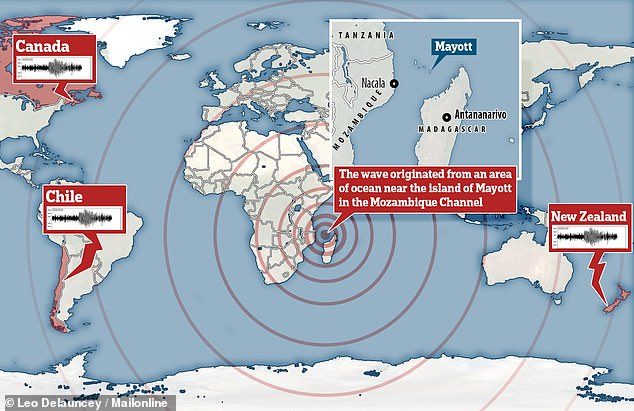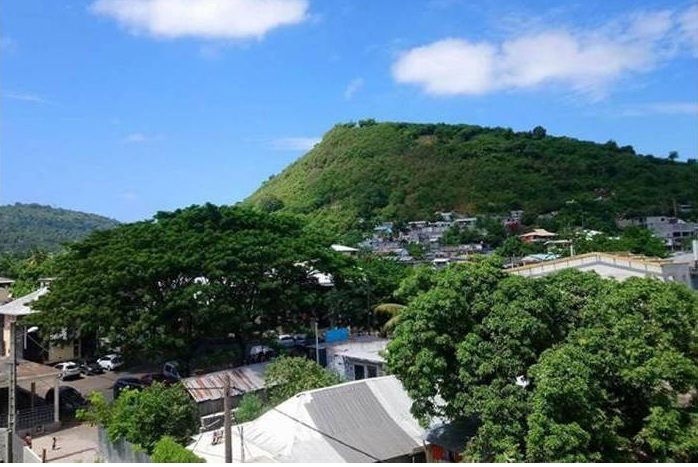As well as visual observations of dead fish, including dolphins and manta rays, there have been reports of a strong "burnt" smell, which was "not bearable" that which covered "an area of several kilometers," according to a representative of fishermen as reported by 20minutes.fr.

Earthquakes unleash high frequency seismic waves that vibrate back and forth and from side to side. "This source was completely deficient in those waves," said Stephen Hicks, a seismologist at the University of Southampton. "It wasn't picked up because the signal had a very low frequency. It was a low, gentle rumbling." As reported in the Guardian:
The Mayotte vibrations took about 40 minutes to reach Britain, and an hour and 15 minutes to reach Hawaii, more than 11,000 miles from their point of origin.This mass fish die off and "burnt" smell could be indicative of gas/lava release from fissures connected to a volcanic chamber collapse (or another undersea volcanic eruption/methane seep).
Such low frequency rumbles are rare but not unheard of. Scientists have detected them before after glacier calving, landslides and sudden shifts of magma beneath volcanoes. There are no glaciers near Mayotte and an underwater landslide would have been picked up by hydrophones in the surrounding ocean, said Hicks. That leaves a magma shift somewhere under the seabed as the prime culprit.
Hicks believes magma may suddenly have drained from a volcanic chamber about 10 miles under the seafloor near Mayotte, setting off the deep rumble that spread around the world. While strong enough to be picked up by sensitive seismometers, the vibrations would have been minuscule: far smaller than a millimetre. "It's something that you wouldn't perceive," he said.
Pierre Briole, a geoscientist at École Normale Supérieure in Paris, has reached a similar conclusion. He believes that a third of a cubic mile of magma may have drained from a volcanic chamber under the seafloor, unleashing deep vibrations when its roof collapsed.




Reader Comments
to our Newsletter